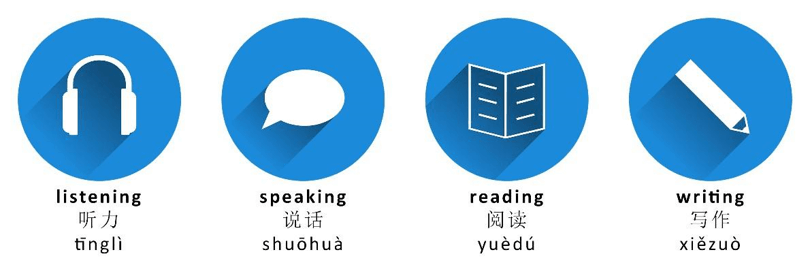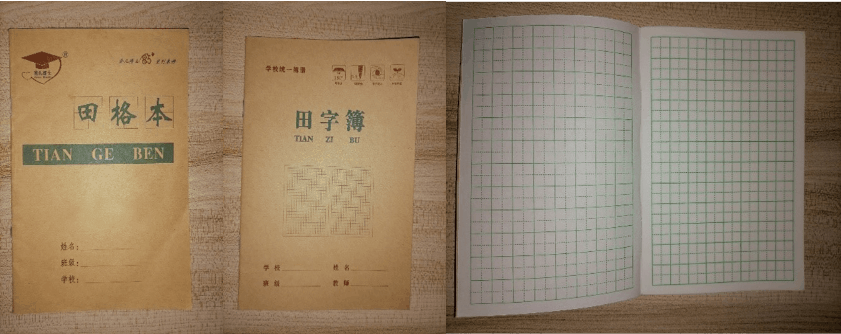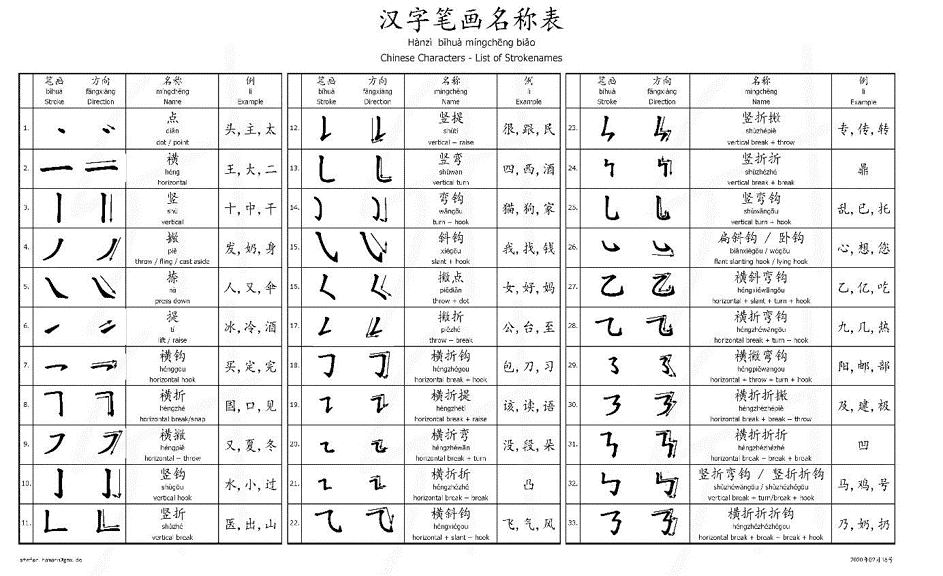I think at one point everyone who starts learning Chinese asks themselves the same questions about writing Chinese:
- Do I need to learn to write Chinese characters?
- When is the best time to begin with them?
- Where do you start?
- How do you write Chinese characters? Are there any rules?
With this article, I want to share a bit of my experience in writing characters and maybe a helpful additional way of learning Chinese. To be clear, I’m not talking about the art of Chinese Calligraphy but just casual hand-writing. Handwritten Chinese with a pen a piece of paper.

Do I need to learn to write Chinese characters?
Learning a language, in general, is split into 4 parts. Each with different importance: Listening, Speaking, Reading, and Writing. I think everyone would agree that Listening and Speaking are the most important. After that comes reading, and at the end is writing as the least important part. Also, if the language is similar to your mother-tongue, then writing and reading becomes just a byproduct, because you already can read and write the words, even if you don’t know the meaning.

The question if you need to learn to write Chinese characters is the most common one, and honestly, it’s not necessary to learn handwritten Chinese. But learning how to write Chinese characters can help and provide another supporting method to learn them if you are into writing.
The few positive attributes of writing Chinese characters:
- It tightens the understanding of the Chinese characters, because you’ll know the different components of a character and can correlate them to their specific family (based on radicals), which makes it easier to understand the deeper meaning of a character. Ninchanese character pages are well detailed to examine a character. Here is the link for looking up any character component.
- Besides that, you become able to discover the same components in different characters, and you later only need to remember the (new) components a character is made of and the order to write them. It’s like letters are put together to form a word.
- It’s also an excellent way to do the daily vocabulary review by just writing them.
- Looking up a new character in a digital Chinese dictionary is incredibly more convenient and faster than looking up a character in a paper dictionary by just writing the characters as you see them.
- Personally, when I’m roaming the streets and see characters on signs, advertisements, etc. which I don’t know, I tend to translate them; And the fastest way for me is, to pull out a Chinese dictionary app like Pleco, switch to handwriting and input the strokes. Pinyin can’t help me here, but looking at the character and inputting its stroke in the app can. This method does require some training because you need to write in the correct order and direction.
- We can also talk about the handwriting drawing function, which I personally use loads more when I want to look up a character I don’t know. Draw character and find it in Pleco, simple as that. (we don’t need to go into fact handwriting /drawing is a paying option if you want to use it directly in Pleco, but it’s free if you use the handwriting drawing keyboard your phone offers)
Before jumping into the subject, let’s take a look at the reasons why you may not need to learn to write Chinese characters.
Why you might not need to learn how to write Chinese characters?
- In today’s digital era, most texts are written on a screen. The text is automatically autocorrected and easily translated right away via apps. Then, handwriting becomes somewhat obsolete.
- Chinese characters use Pinyin, which uses the same letters everybody knows. Type Pinyin, pick the 汉字 you need, done. No need for handwriting strokes, just a good IME keyboard.
- HSK-exams can also be done on a computer, which eliminates the possibility of making stroke-errors.
- Chinese people themselves tend to forget the strokes of characters they don’t use frequently. Out of my experience, almost every teacher who taught me handwritten Chinese until now got at least once in a situation where they had to look up a word in a dictionary because they couldn’t remember the strokes.
When is the best time to start learning to write Chinese characters?
Since I started learning Chinese, I also started writing Chinese characters every day as an additional way to learn words, after the switch from pinyin only to Chinese characters. For me, all of the above points go very well together. Learning to write Chinese character reinforce my understanding of characters.
So, I would say this is also the best time to start writing Chinese characters: right from the beginning. Everyone has to go through the elementary pronunciation- and pinyin-only classes before entering the tough world of Chinese characters, so the best way is when everything goes hand-in-hand. But it’s also not too late to start with it if you are already on a higher level. You just need some patience, persistence, and a good learning strategy.

But since everyone learns differently, has their methods and is not necessarily that interested in the world of Chinese characters, this totally depends on your preferences.
🏮 Ninchanese is an incredible app for learning Chinese! 🏮
” I actually graduated from the University of Edinburgh with a MA in Chinese.
I’ve used Ninchanese daily, and it has helped me a lot! “
– Connor, Ninchanese User
Try Ninchanese, an award-winning method to learn Chinese today:
Start Learning Now
How do I start learning writing Chinese characters?
The material
When I started with hand-writing Chinese, I tried different methods to find what worked best for me.
So, first things first: Basically, what you need is just a pen, something to write on, some words you want to practice and a dictionary/app which can show you the stroke-orders and directions.
The plan
Sounds simple and easy but there are some factors you have to ask yourself:
- How often do you want to practice (daily, every 2 days, weekly, bi-weekly?)
- When you practice, how much time do you want to spend?
- How many characters do you want to write, and how to choose what to write?
- Why do you want to practice these characters?
- When do you know that you practiced enough and need to drill new characters?
And as mentioned above, it’s not about Calligraphy, but casual handwriting. So, don’t spend too much time and money in searching for the best pen and paper. In my opinion, that doesn’t matter that much; you just need to feel comfortable when writing. The only thing which has at least a small impact is the paper.
My own routine
For me, the paper affects a lot of those questions above. You’ll get that later, first I’ll show you my personal answers on the questions:
- I want to write characters daily as part of my learning-routine (this needs persistence), but I also don’t want to spend too much time (<20 min daily).
- I’m learning with different materials: Chinese classes, books, Apps (mostly Ninchanese), etc. I usually pick the words I write from those materials. E.g., I’m learning a new unit in a book or started to learn some new words on Ninchanese; then, I’ll also use these words to practice writing Chinese characters. This way, everything is learned together and can be connected.
The role of the paper
To answer the other questions, at this point, the paper comes in:
I’m using those small vocabulary-notebooks, which are exactly what I need:

Both of them are pretty much the same. It’s just different manufacturers, and the 田格本 had one row less than the 田字簿。
So, based on these notebooks, I decided to write one page every day, which answers the questions of how much time to spent and how many characters to write:
- One page is one day
- One line is one word (can be 1 to 4 characters), which currently is 12 words/phrases
- On the left side, I write the pinyin, so I know what to write. To keep track of how long I have to practice a word until I know it, I write a point on the right side, and if I had this word right for at least 3 days, I’ll exchange it with a new character.

Does stroke order matter in chinese? The list of Strokenames of Chinese character
All types of strokes have names by themselves, but you don’t have to remember all of those. Even in casual Chinese language, these are rarely known. There are some which are also very rarely used, only in a few characters.
I picked this sheet up in the past for a class once and translated the names, so you can imagine where their names come from:

Writing Right-/Lefthanded:
You may have heard that the majority of Chinese people are right-handed. It’s a tradition to train left-handed people to use their right hand. So, why do I mention it? I am lefthanded, which leads to a minor problem when writing these characters.
When you look at the stroke orders and directions, these are defined rules and these essential when you write with an ink-pen or brush, because you have to press down and lift the pen at the end, so it leaves a specific line-thickness at the end or beginning.
When casually writing Chinese characters, a right-handed person would drag the pen in the direction he writes and leaves the words, but a left-handed person has to push the pen and would always smear his left-hand over the just written words. So, using a lot of ink will always result in a big mess, but it also feels very uncomfortable when you have to push a pen to create horizontal strokes (try to push a pen over paper, you’ll see). And here again, I have to mention it’s just about casual handwriting, so to feel comfortable writing Chinese characters, I write horizontal lines from right to left instead of the other direction.
A short personal story about that: One time in school, I had to write characters on the whiteboard in front of the teacher, and it was the first time I had to do that. So, I just wrote like I was comfortable with dragging horizontal lines from right to left. In the end, my teacher smiled and said that the written characters are 100% correct, but the way I wrote was not that accurate, and I explained that I knew but did so because I use my left hand, and it feels more comfortable that way. This was hard to understand for him, and it still is for a lot of (righthanded) people when I explain it.
Final words
Since that episode with the teacher, I’m still doing my writing-practice how I feel comfortable, but I also know the proper way, and whenever I have to write in front of a teacher, I’ll write how it is intended, even if it’s not comfortable for me.
So, saying that, I hope this article provides some useful tips and answers to some questions which prevented you from writing Chinese characters. It doesn’t take much, so why not just give it a try? Who knows, you may get the hang of it and it becomes a routine in your daily life.
Stefan and The Nincha Team Stay in touch with us on Facebook, Twitter, Instagram, and Pinterest.Try the best way to learn Chinese today.
Ninchanese is free to use!Sign up now




